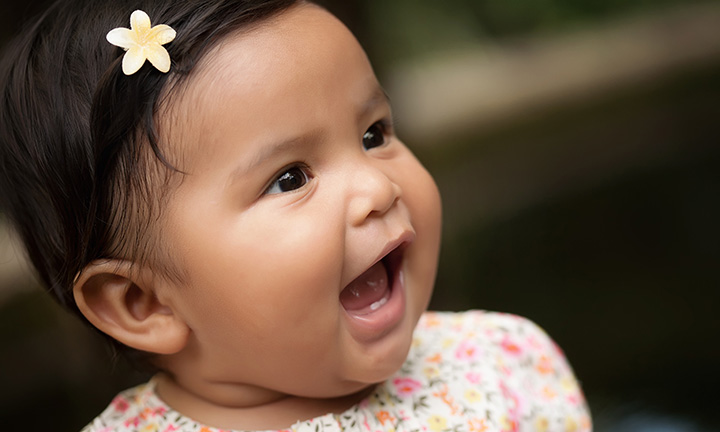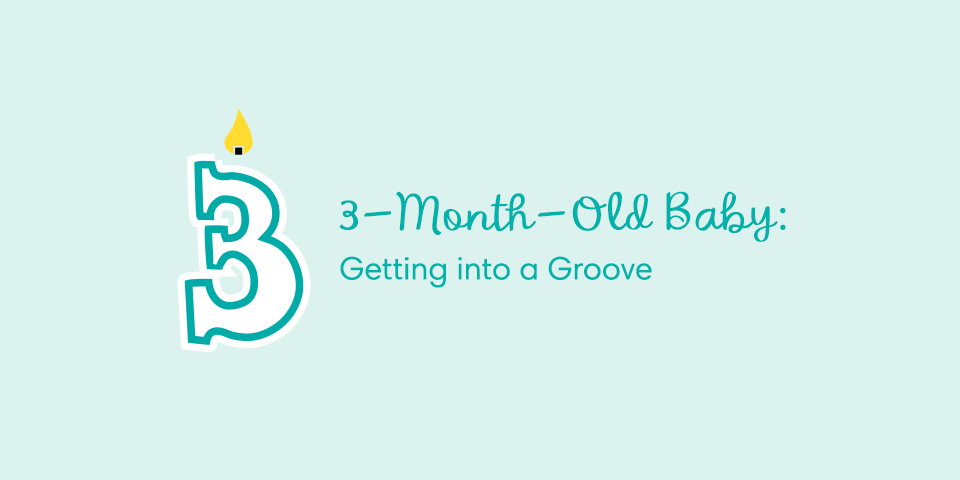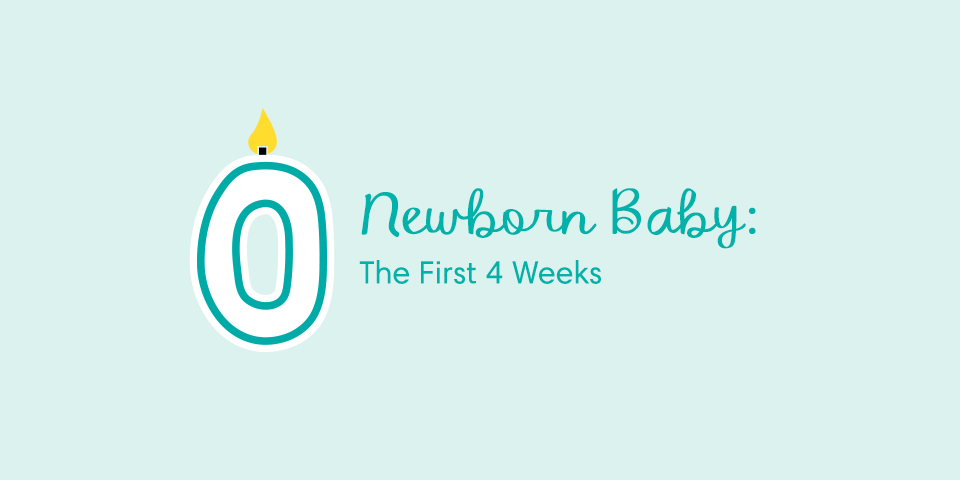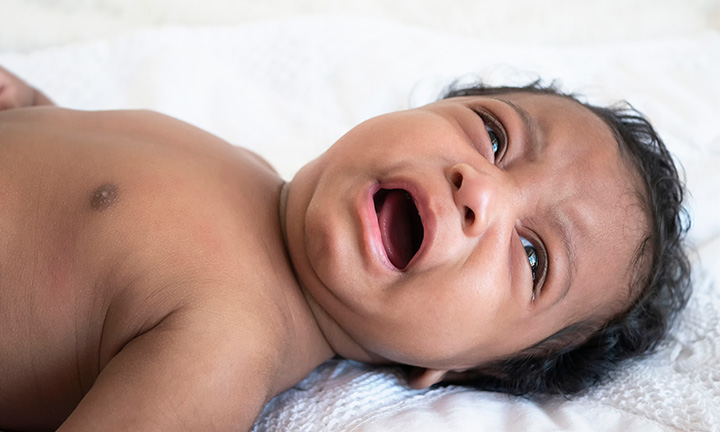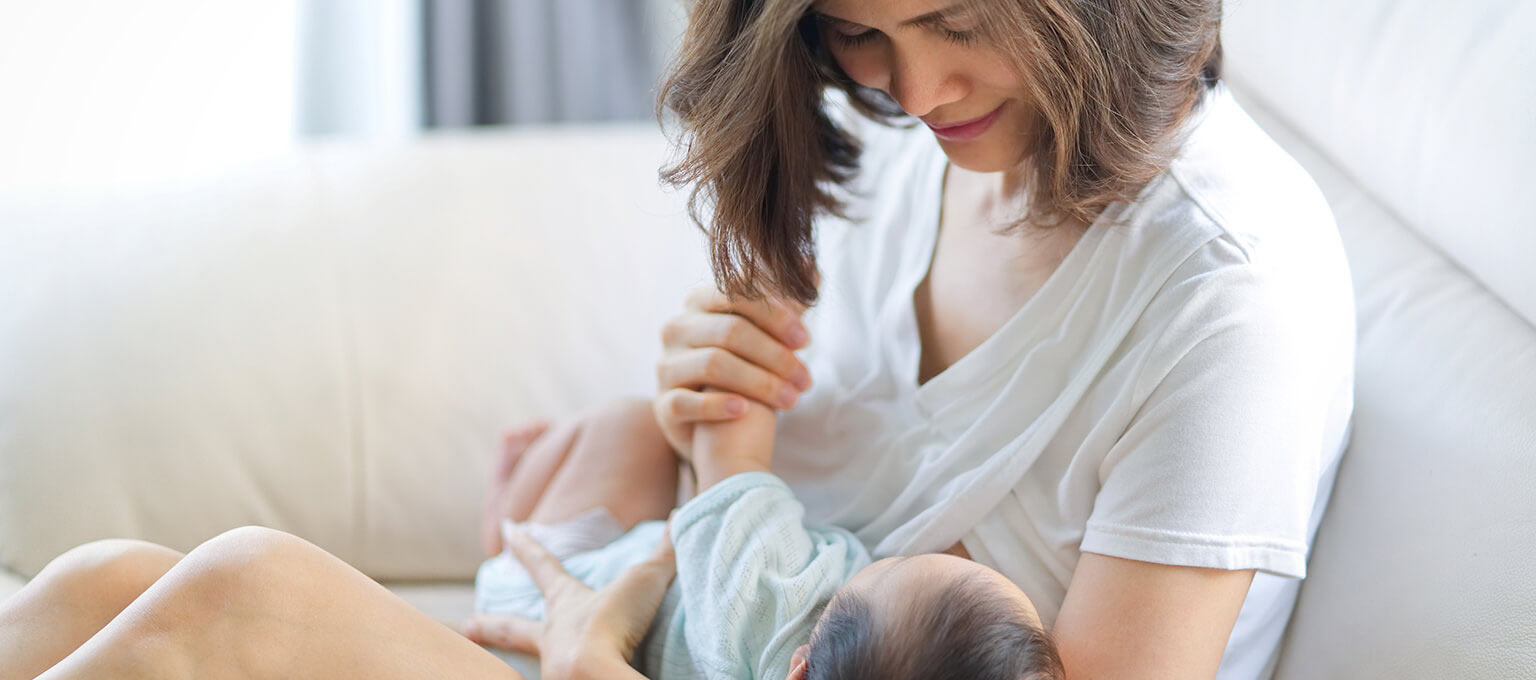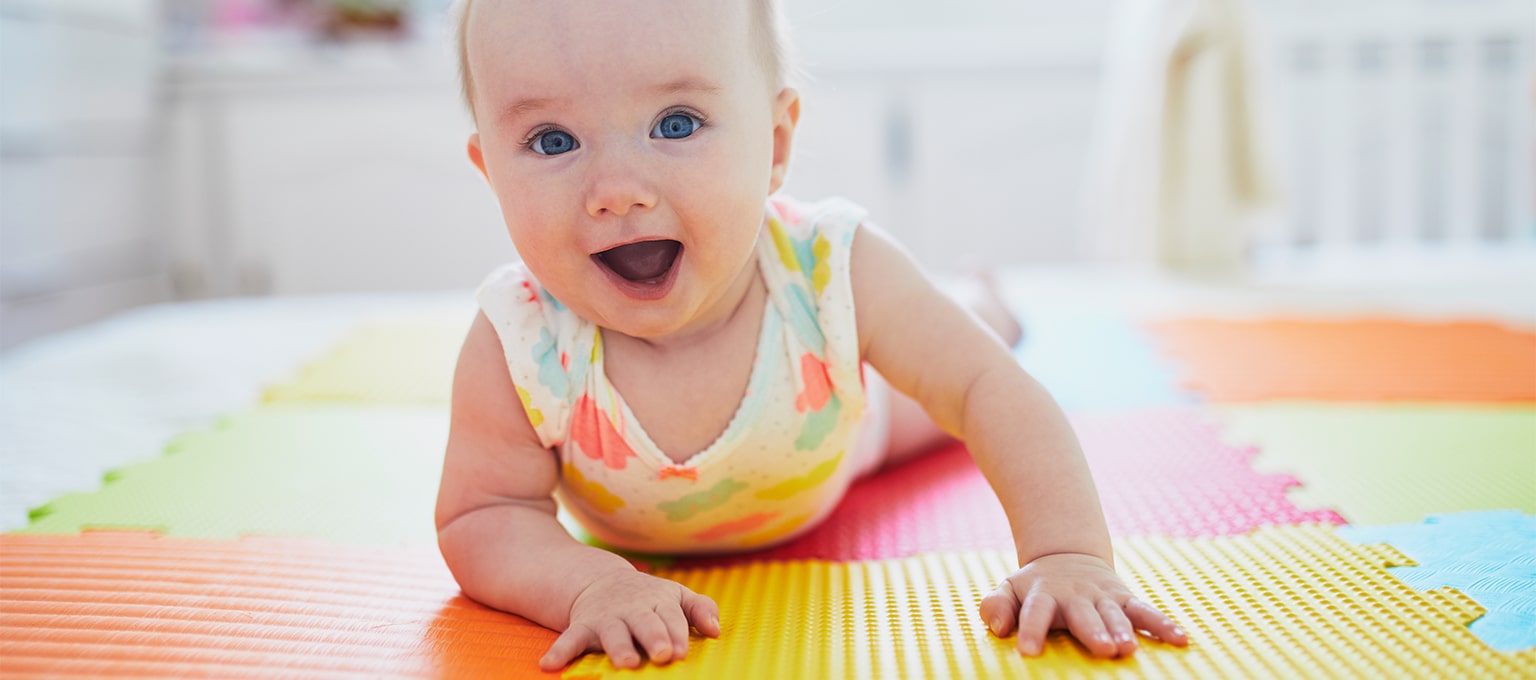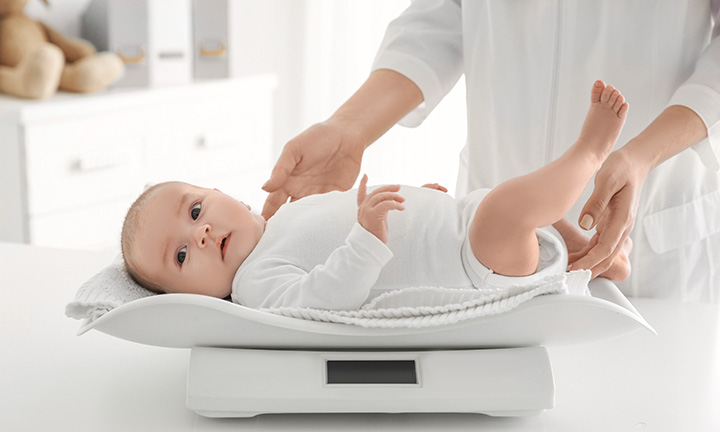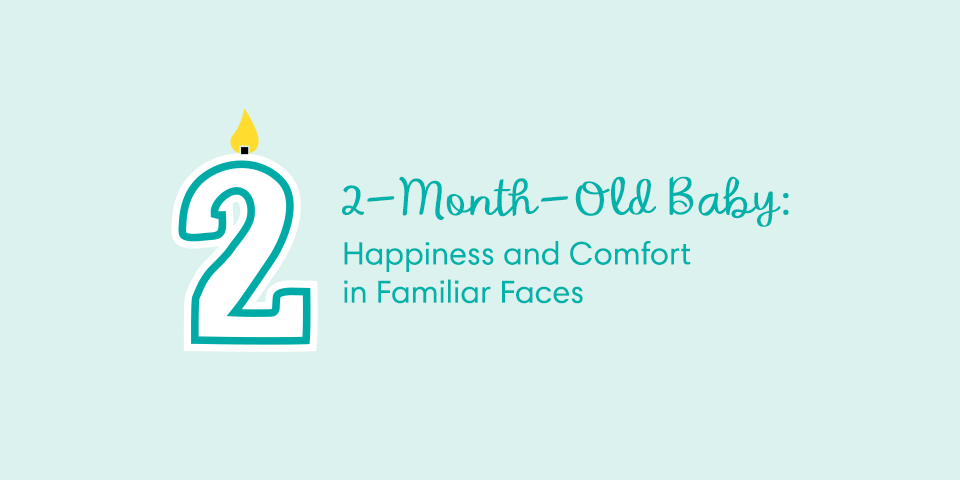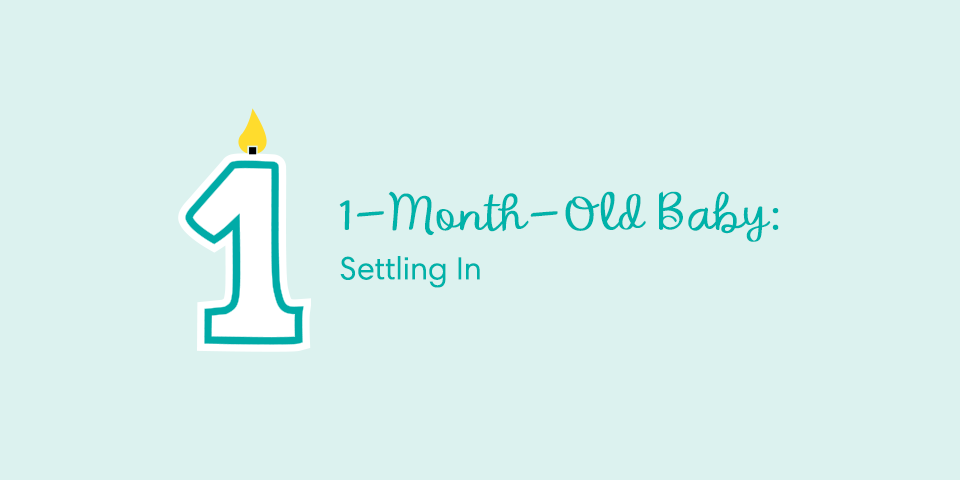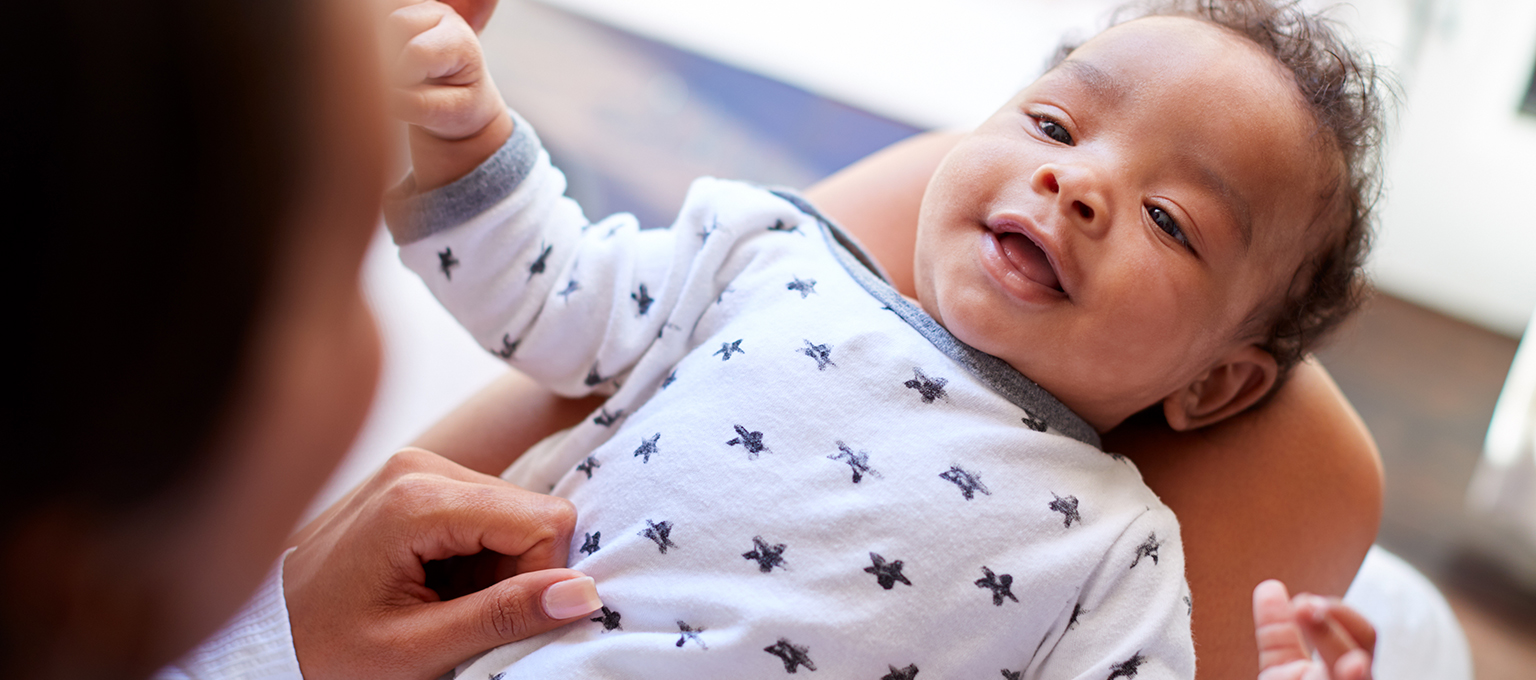
When Do Babies Start Smiling?


Seeing your baby look up at you and smile for the first time is a heartwarming moment that you'll cherish forever. If you're curious about when your baby will smile purposefully to express their happiness at seeing you, you're in the right place.
Although your baby’s initial smiles are reflexive, be patient, and soon enough you’ll notice that first true smile. Next thing you know, your baby will be smiling all the time in response to the entertaining sounds and faces you make, and even just the sight of you as you smile at them.
Read on to find out the answer to “When do newborn babies smile?” and discover what’s behind their first smiles. You can also discover a few ways to encourage your baby to keep smiling and learn what to do if you’re concerned that your little one isn’t smiling yet.
Newborn Smile Reflex
During your baby’s first month, you may notice them smiling during sleep. This is called a reflexive smile.
Although no one knows for sure what triggers reflexive smiling, experts think it might happen when babies respond to an internal stimulus during sleep.
This type of smiling isn’t the real deal yet. You’ll have to wait a little longer before you see your baby flash their first real smile, sometimes called a social smile.
When Do Babies Social Smile?
So, at what age might you expect to see your newborn baby’s first social smile?
Although your baby may experiment with grins and grimaces in the first month, especially in response to others smiling at them regularly, it’s actually by the end of the second month that these typically turn into genuine smiles that signal pleasure and friendliness.
These true smiles happen when they’re awake and alert—not in their sleep and are also a key milestone in your baby’s development.
Your Baby’s First Real Smile: A Sign of Development
Your baby will start to realize that moving their lips and grinning will bring them more attention from you and others. As they become more in tune with you and more socially engaged with other adults and children, their brain development will advance. This increasing engagement may also help them become more distracted from everyday internal sensations like hunger, gas, and fatigue.
By about 3 or 4 months old, they’ll be socializing with almost everyone they see by mirroring others’ facial movements. Of course, they’ll still have their favorites, that is, you and the people who care for them most often.
The more they socialize, the more they will appreciate these new experiences. This early form of socializing is all-important to their ongoing social and emotional development.
Every baby develops in their own way and at their own pace. However, if your baby doesn’t start smiling at people by 3 months, tell your baby’s healthcare provider.
How to Encourage Your Baby to Smile
Wondering how to make a newborn smile or how to encourage that social smile? Your baby’s first smile will likely happen in the second month. Until then, be patient and know that eventually, you will see that first smile.
Here are some tips to help encourage your baby to start—and keep—smiling:
Smile regularly. The more you smile at your baby, the more they’ll smile back. This type of give and take is sometimes known as smile-talking, and it usually begins in earnest when your little one is around 3 months old. By responding to your baby’s smiles and engaging with them by smile-talking, you will be encouraging their development. Responding to them lets them know that they’re important, that they can trust you, and that they have some control.
Play along. Your baby may start a “conversation” with you by flashing a wide smile or a big grin to get your attention. Sometimes they might wait for you to smile at them first, before responding with a matching smile. This is their way of imitating you. Their whole body might also reflect their happy face, as their arms might reach upward and their legs might move in excitement. Although it might look as if they’re simply being playful with you, imitation is actually an important step in their social and emotional development. So, go ahead and play along with your baby.
Make eye contact. Try not to interrupt or look away from your baby when they’re smile-talking with you. Your concentrated attention lets them know that you’re interested in what they have to “say” and that you value their opinion. These interactions will help nurture their self-esteem and communication skills and teach them about body language.
What Comes After a Smile?
After your baby’s first smile, you’ll likely notice more social and emotional milestones as they develop. Smiling is often followed by cooing and babbling as your baby experiments with sounds to engage with you. Around 3 to 4 months, many babies begin to laugh and show a wider range of facial expressions. These milestones are signs of developing social interaction and emotional connection.
Encourage this progress by responding to your baby’s smiles and sounds with your own expressions, words, and laughter. This back-and-forth interaction helps build their communication skills and strengthens your bond.
What to Do If Your Baby Isn’t Smiling
If your baby’s not smiling at 2 months, it might simply be due to their unique developmental pace. Remember, every child develops at their own pace. However, if they aren't showing any signs of social interaction, such as making eye contact or reacting to familiar voices by 3 months, it's advisable to consult your healthcare provider.
Factors like vision or hearing issues may affect early social development. A healthcare provider can evaluate whether your baby is reaching other milestones and recommend any necessary interventions. Early support can make a significant difference.
FAQS AT A GLANCE
It may be possible for your baby to smile at 4 weeks but usually only while they’re sleeping. This is called a reflex smile. Your little one may not flash a true smile until about 6 weeks or a little older, and these true smiles happen when they’re awake and alert.
The Bottom Line
If you haven’t seen your baby’s first true smile yet, you’re probably waiting with bated breath. Keep on smiling at your baby, and eventually, when the time is right, they’ll smile back. Once it happens, it will be an unforgettable moment, and you can be sure that from that point on your time together will be filled with lots of smile-talk, giggles, and grins from ear to ear.
One more thing to keep you smiling is the rewards and discounts you can get for your Pampers purchases with the Pampers Rewards app. Download the app today and simply scan the codes found inside the packaging to earn Pampers Cash that can be redeemed at your favorite retailer for discounts on Pampers Diapers and Wipes.
- American Academy of Pediatrics. Caring for Your Baby and Young Child: Birth to Age 5, 7th ed. (New York: Bantam Books, 2019).
- Mayo Clinic. Infant development: Birth to 3 months
- Mayo Clinic. Infant development: Milestones from 4 to 6 months
- Healthy Children. Emotional & Social Development in Babies: Birth to 3 Months
- Healthy Children. Emotional and Social Development: 4 to 7 Months
- Healthy Children. Movement Milestones: Birth to 3 Months
- Healthy Children. When Do Babies First Smile?
- Healthy Children. Your Baby’s First Smile
Read more about Baby
Related Articles
Join a World of Support
through Pregnancy and Parenthood.
TRACK WITH TOOLS
LEARN WITH EXPERTS
GET REWARDED

